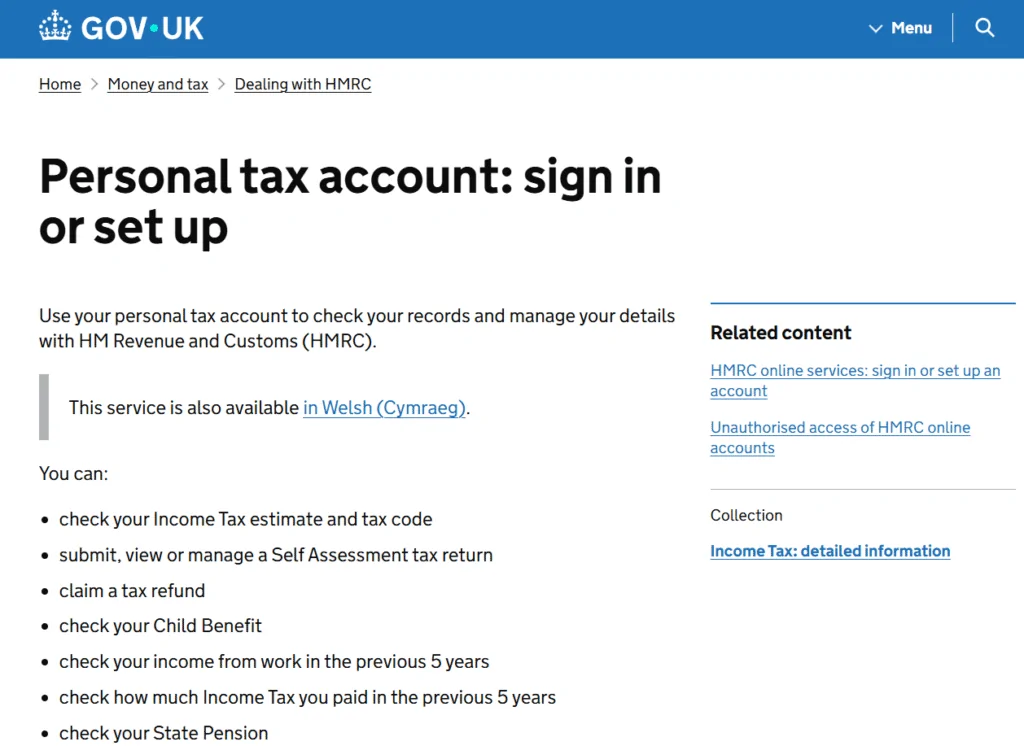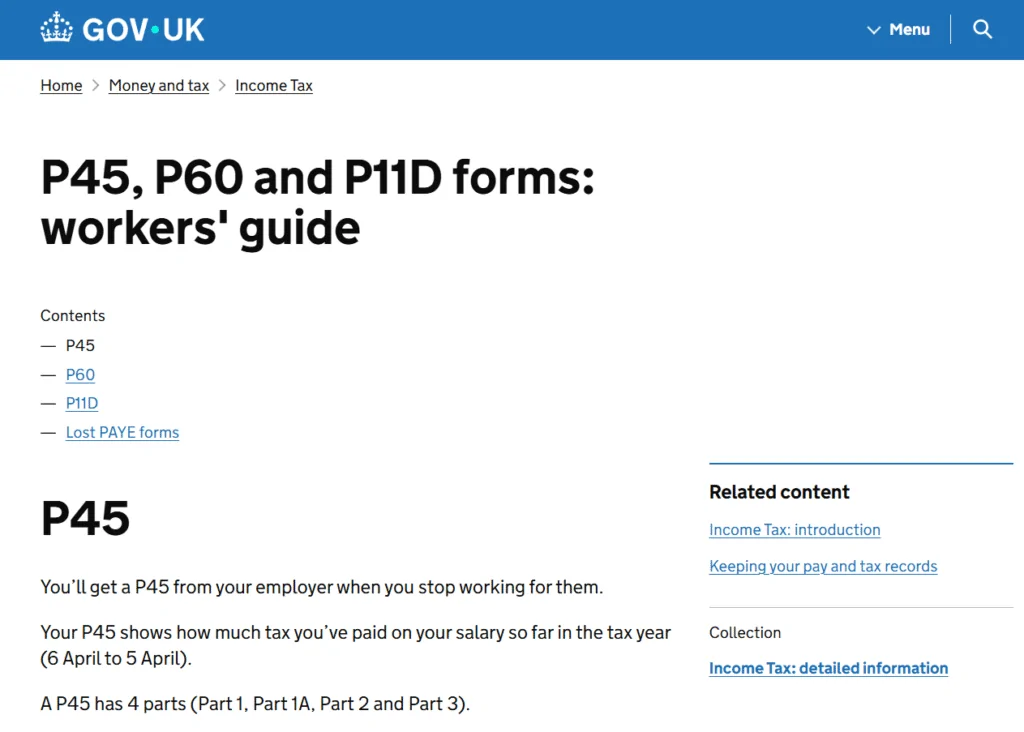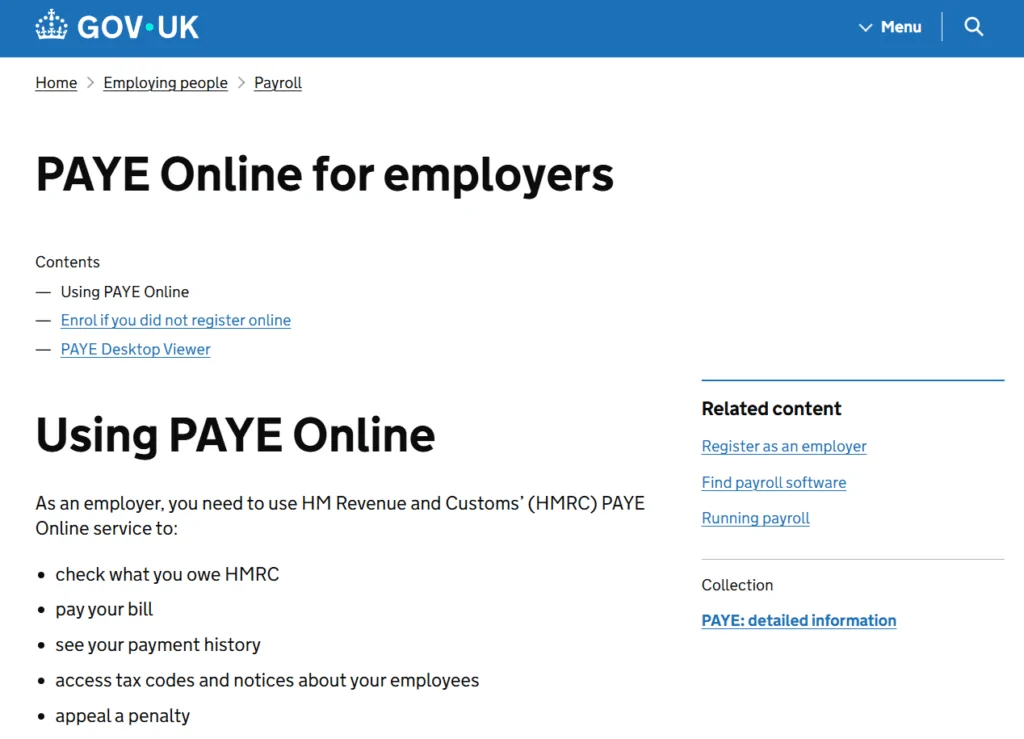HMRC P14 Form – Complete Guide to the P14, How It Works Today, and How to Access Your Historical PAYE Data
Understanding the P14: What It Was, What Replaced It, and How It Affects You Today
Before 2013, the P14 form was one of the most important payroll forms in the UK. It was used by employers to report a full year of payroll information for every employee to HMRC. Today, the P14 no longer exists in its original form — but the information it contained is still relevant and still needed by workers, accountants, lenders, and HMRC.
This guide explains everything:
-
What the P14 used to be
-
Why HMRC abolished it
-
How payroll reporting works now under RTI (Real Time Information)
-
How to access P14-equivalent information for historic years
-
How employers correct historic payroll data
-
How employees use historic P14 data for refunds, mortgages, benefits, and more
If you need to understand, access, or use P14 data, this page is your complete step-by-step resource.
What Was the HMRC P14 Form?
The P14 (End of Year Summary) was an official HMRC payroll form used before April 2013.
Employers submitted a P14 for every employee at the end of each tax year.
Each P14 contained:
-
Total pay for the year
-
Total tax deducted (PAYE)
-
National Insurance contributions
-
Statutory payments (SMP, SSP, etc.)
-
Final tax codes and adjustments
-
Year-to-date earnings and deductions
It was submitted together with the P35 form, which summarised the employer’s totals.
Why Was the P14 Abolished?
In April 2013, HMRC introduced RTI – Real Time Information.
Under RTI:
-
Employers report payroll data every time they pay employees
-
Instead of sending one form at the end of the year (P14)
-
P14 and P35 were discontinued and replaced with:
-
FPS (Full Payment Submission)
-
EPS (Employer Payment Summary)
-
RTI modernised the PAYE system and made real-time tax codes, benefits, and Universal Credit possible.
Official HMRC guidance:
https://www.gov.uk/payroll-real-time-information
Is the P14 Still Used Today?
Not as a form — but YES as data.
The form P14 no longer exists.
However, the information that P14 used to contain still exists under RTI records.
People still need P14-equivalent data for:
-
Mortgage applications
-
Employment history checks
-
Tax refund claims
-
Correcting historic underpayments or overpayments
-
HMRC investigations
-
Personal record keeping
-
Verifying pension contributions
So while employers don’t submit P14s anymore, the concept and data remain important.
What Replaced the P14 in the Modern HMRC System?
After 2013, these submissions replaced P14 and P35:
Full Payment Submission (FPS)
Sent every time an employee is paid.
Includes:
-
Gross pay
-
Tax deducted
-
NIC deducted
-
Student loans
-
Pension contributions
Employer Payment Summary (EPS)
Sent monthly to report:
-
Statutory payments reclaimed
-
Employment allowance
-
CIS deductions
-
Adjustments
These submissions together contain all the data that used to exist on the old P14.
What Information Was on the P14?
A single P14 record contained all the yearly payroll details HMRC needed for an employee.
It included:
-
Employer PAYE reference
-
Employee name, address, NI number
-
Total taxable pay
-
Total tax deducted
-
NIC (employee and employer)
-
Pension deduction details
-
Statutory payments (SMP, SSP, SAP)
-
Contracted-out NI history (historic years only)
-
Final tax code used
-
Year-to-date totals
This data still exists for all years up to and including 2012–2013.
Why Do People Still Search for “P14 HMRC”?
Because people still need the information the P14 contained, especially for:
-
Mortgages
-
Car finance
-
Visa applications
-
Tax refunds
-
Employment tribunal cases
-
Universal Credit assessments
-
Pension audits
-
Self-Assessment corrections
And because HMRC, accountants, and lenders often reference “historic P14 data” in communication.
How to Access P14-Equivalent Data Today (Employees)
1. Through Your HMRC Personal Tax Account
You can access your entire PAYE history online:
https://www.gov.uk/personal-tax-account
Go to:
Income record → Employment history → PAYE records
You will find:
-
All pay and tax for each job
-
Year-to-date totals
-
Employer details
-
Historic information back to the P14 era
2. Requesting a PAYE Employment History from HMRC
You can request your official HMRC employment history:
https://www.gov.uk/paye-forms-p45-p60-p11d
Request options:
-
Online
-
By post
-
By phone
This often satisfies lenders and solicitors.
3. Ask Your Former Employer for a Copy of Your Payroll History
Employers keep PAYE records for at least 6 years.
If you need:
-
Pre-2013 P14
-
Old payslips
-
End-of-year summaries
-
Annual earnings statements
Your employer or their payroll provider may still hold them.
How to Access P14-Equivalent Data Today (Employers)
1. Through HMRC PAYE Online
Employers can retrieve:
-
All FPS submissions
-
All EPS submissions
-
Employee pay and tax history
-
Final year-to-date figures
This replaces the old P14.
Official link:
https://www.gov.uk/paye-online
2. Through Payroll Software
Most payroll programs store historic RTI submissions:
-
Sage
-
Xero
-
QuickBooks
-
BrightPay
-
Moneysoft
-
FreeAgent
You can download:
-
Year-to-date snapshots
-
Annual payroll summaries
-
Employee history reports
These are accepted by lenders and HMRC.
3. Requesting Legacy Records
For pre-2013 years, HMRC maintains the legacy PAYE database.
Employers can request historical P14 data if needed.
Why P14 Information Still Matters Today
Even though the form is gone, P14 data is essential for:
Mortgage and Loan Applications
Banks often require:
-
Proof of historic earnings
-
Payroll summaries
-
Year-end confirmation
P60 may not cover everything — P14 data fills the gaps.
Correcting Tax from Previous Years
If an employee:
-
Was on the wrong tax code
-
Was paid incorrectly
-
Was charged the wrong NIC
-
Had duplicated employments
P14-equivalent information allows HMRC to correct the error.
PAYE Investigations
HMRC sometimes asks employers for:
-
Historic payroll evidence
-
Year-to-date totals
-
RTI submissions
-
Pre-2013 P14 equivalents
Pension Calculations
Historic payroll records help confirm:
-
Contributions
-
Earnings levels
-
Contracted-out NI status
Visa, Immigration & Citizenship
Home Office may require official earnings history from HMRC.
Employment Tribunals
Tribunals often require:
-
Historic pay
-
Tax deducted
-
NI paid
-
Proof of earnings
How Employers Correct Historic Payroll Data (Including P14-Era Years)
For RTI years (2013 onward):
You must submit:
-
FPS correction
OR -
Earlier Year Update (EYU) for older RTI years
Official info:
https://www.gov.uk/payroll-errors
For P14-era years (pre-2013):
Employers must provide:
-
Copies of P14-equivalent records
-
Payroll summaries
-
Explanation of errors
-
Full year-end breakdowns
HMRC may request:
-
Employer declarations
-
Supporting payslips
-
Ledger records
Audit Consulting Group can assist employers with these requests.
Common Problems Related to P14 Data
Employees often encounter:
-
Missing years of earnings
-
Incorrect tax deducted
-
Missing NI contributions
-
Employers failing to report correctly pre-2013
-
HMRC mismatched records
-
Gaps in earnings affecting pensions
Employers often encounter:
-
HMRC asking for old submissions
-
Employee disputes
-
PAYE compliance checks
-
Difficulty retrieving legacy payroll data
Professionals often need:
-
Old records for audits
-
Confirmations for legal cases
-
Support letters for lenders
We deal with all of these regularly.
Case Studies
Case 1 – Mortgage Application Problem
Client: S. Patel, London
Issue: Lender required historic earnings for 2010–2012.
Solution: We helped retrieve legacy P14 data from HMRC and employer.
Outcome: Mortgage approved.
Case 2 – Pension NI Gap
Client: Margaret F., Brighton
Issue: HMRC showed missing NI contributions from 2008–2009.
Solution: We retrieved historic P14-equivalent records and corrected NI.
Outcome: Pension entitlement fully restored.
Case 3 – Payroll Audit
Client: Engineering Firm, Manchester
Issue: HMRC audit required legacy PAYE verification.
Solution: We reconstructed all P14-era payroll records.
Outcome: Audit passed with no penalties.
Case 4 – Tax Refund Due to Incorrect Tax Code
Client: Daniel R., Birmingham
Issue: Wrong tax code applied in 2011–2012.
Solution: Identified the error using P14-equivalent data; HMRC issued refund.
Outcome: £1,640 refunded.
Frequently Asked Questions (FAQ)
Q1: Does the P14 form still exist?
No — the form was abolished in April 2013.
Q2: How do I get a copy of my P14?
You can access the equivalent information via:
-
HMRC Personal Tax Account
-
Requesting PAYE history
-
Employer records
Q3: What replaced the P14?
RTI submissions — FPS and EPS.
Q4: Do employers still need to submit anything like P14?
No. Payroll is now reported in real time via RTI.
Q5: Can I still access P14 data from before 2013?
Yes. HMRC stores legacy PAYE records.
Q6: Do I need P14 to claim a tax refund?
You may need P14-equivalent information for older years.
Q7: Why does my lender ask for P14?
They simply want historic PAYE records showing earnings and tax paid.
When to Get Professional Help
If you:
-
Need historic P14 data
-
Need to correct past PAYE errors
-
Have missing earnings
-
Are dealing with HMRC queries
-
Have problems with NI gaps
-
Need support for mortgages or legal cases
Audit Consulting Group can help retrieve, interpret, and correct the records.







